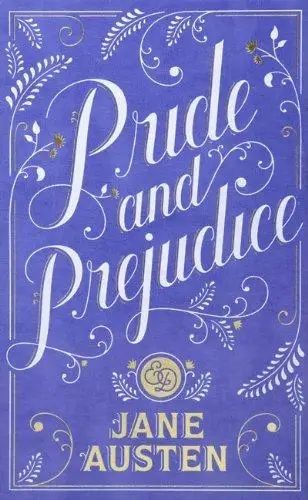For Readers in Want of a Good Read: A Review of Pride and Prejudice
Kately Rivero // Blog Writer
Ask any avid reader to choose their favorite book and you’ll instead get a staggering list. The singular choice of only one favorite book can be daunting, but favorites nonetheless we have. I have personally always had my favorite book position in a state of constant shuffling, that is, until I finally sat down and read the Jane Austen classic Pride and Prejudice.
Pride and Prejudice famously opens, “It is a truth universally acknowledged, that a single man in possession of a good fortune, must be in want of a wife.” Jane Austen fans already know what awaits them after this greeting: a complete denial of this supposed universal truth.

The book primarily follows 20 year-old Elizabeth Bennet and her four sisters. The Bennet sisters live with an overbearing mother attempting to marry her daughters off as they are getting too old, and the family is facing financial burdens. It’s a classic 1800’s society. The Bennets are sent for a loop with the arrival of the illustrious Charles Bingley. Their mother goes into full matchmaker mode, desperately trying to set her eldest daughter Jane and Mr. Bingley up. The introduction of Mr. Bingley also brings Fitzwilliam Darcy, Bingley’s friend, into the fold. Mr. Darcy initially comes across as an incredibly rude and prejudiced person.
Pride and Prejudice is more than just a tale of romance. It’s a tale of very human characters with traits that still apply in today’s society. Elizabeth and Mr. Darcy flaws are a test to each other’s dynamics and way of thinking. What makes Pride and Prejudice so engaging is its ability to criticize societal views. These ideas in the novel transcend its time period and thus continues earning its reverence. People are still prejudicial, people are still prideful, and people are still incredibly flawed.
It’s always refreshing to find a novel that refuses to shy away from the ugly characteristics that we may carry. It feels so satisfying to be such an intimate part of the growing process these characters go through and to see them evolve from their original way of thinking.
It’s also incredibly refreshing to find a novel from the 19th century tackle societal viewpoints on women and then prove that a woman doesn’t need to follow the construct laid out before them. Elizabeth and Jane – who are both in their 20s – face pressure to get married to a wealthy man in order to complete their respective duties as a woman. Jane Austen challenges that and creates a protagonist in Elizabeth who refuses this definition of a woman.
If you enjoy rich and human characters, this is definitely a worthy read, and I can’t recommend it enough, as long as you don’t mind writing from the 19th century. This is more than just the stereotypical romance. Pride and Prejudice has managed to transcend time and remain increasingly relevant in today’s society, despite having societal ideals that most in the 21st century reject; that in and of itself is an incredible feat.
